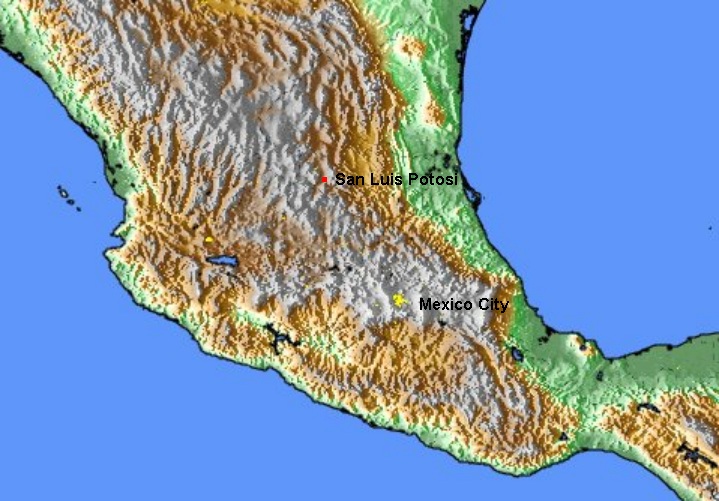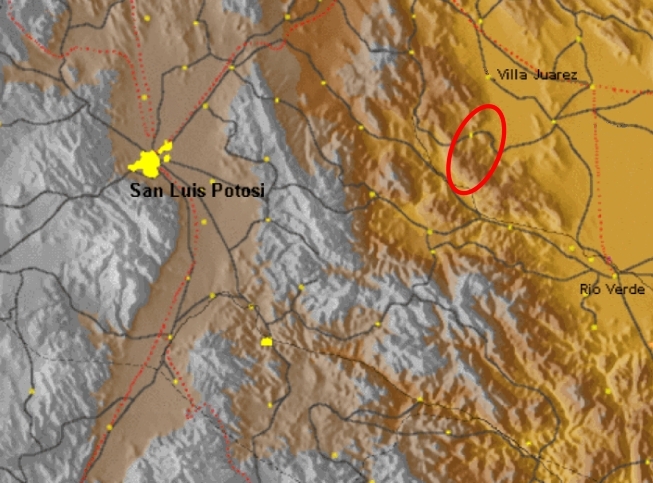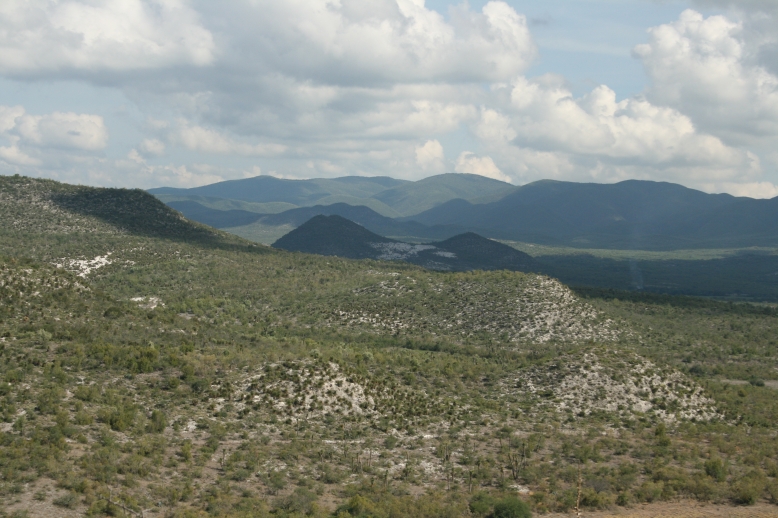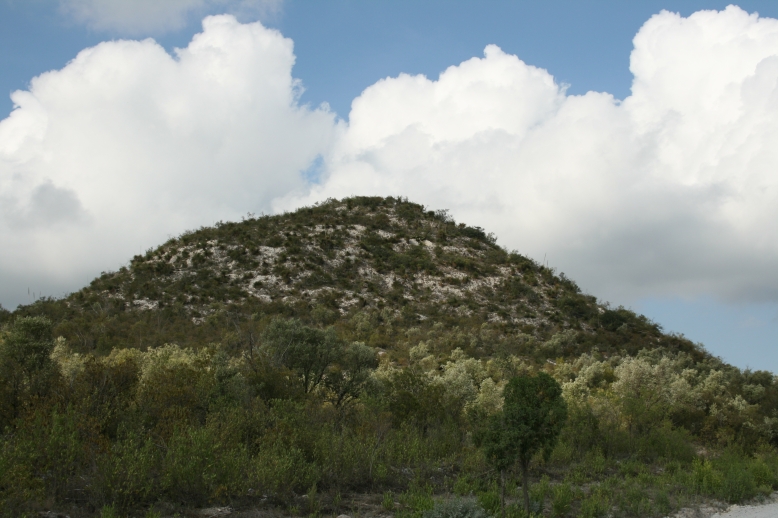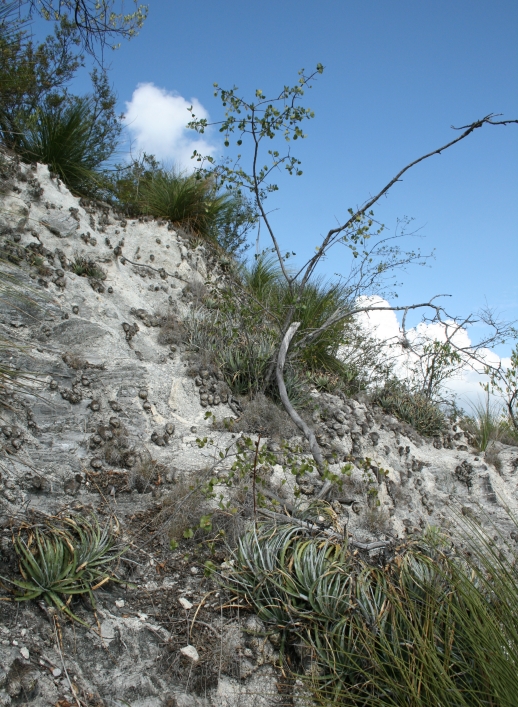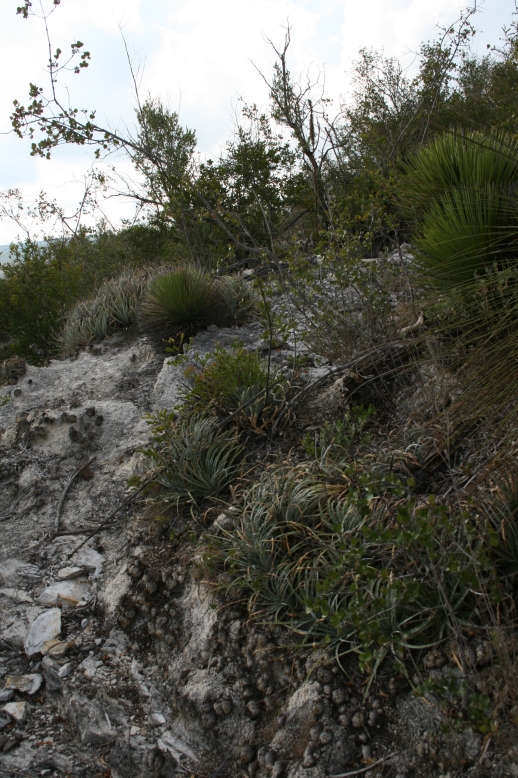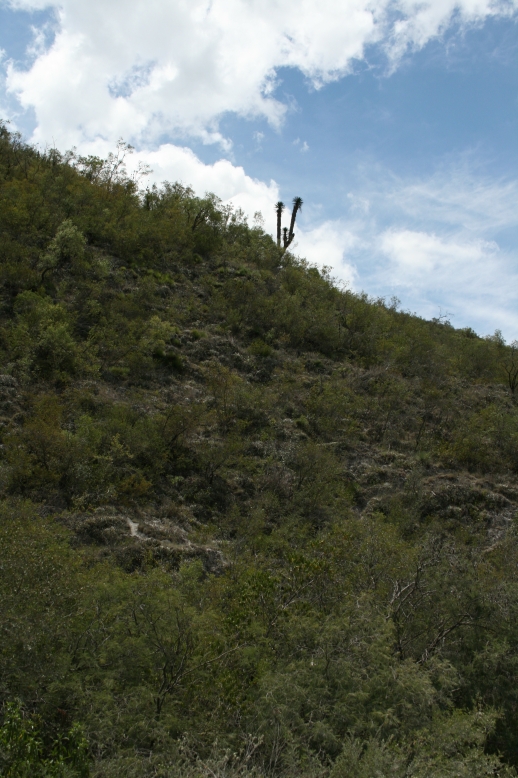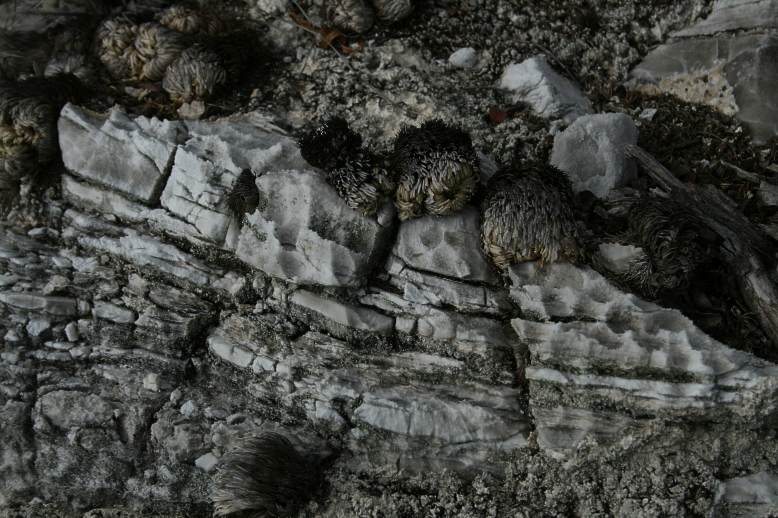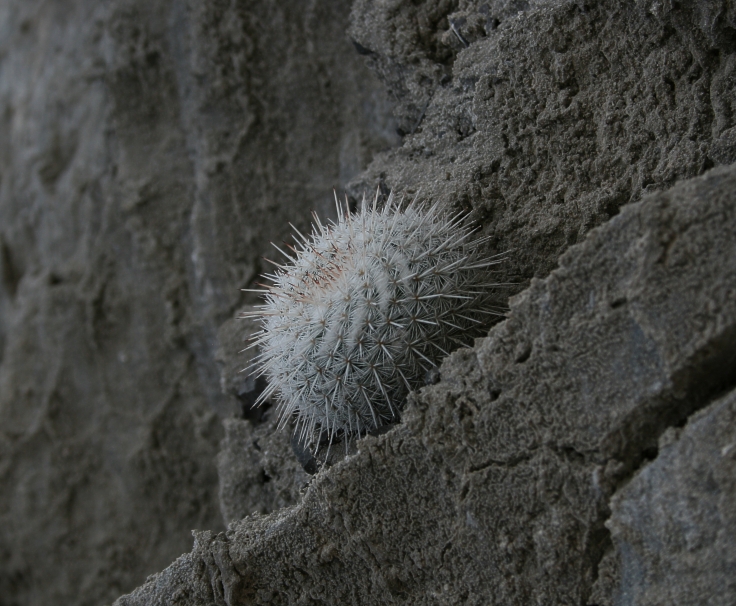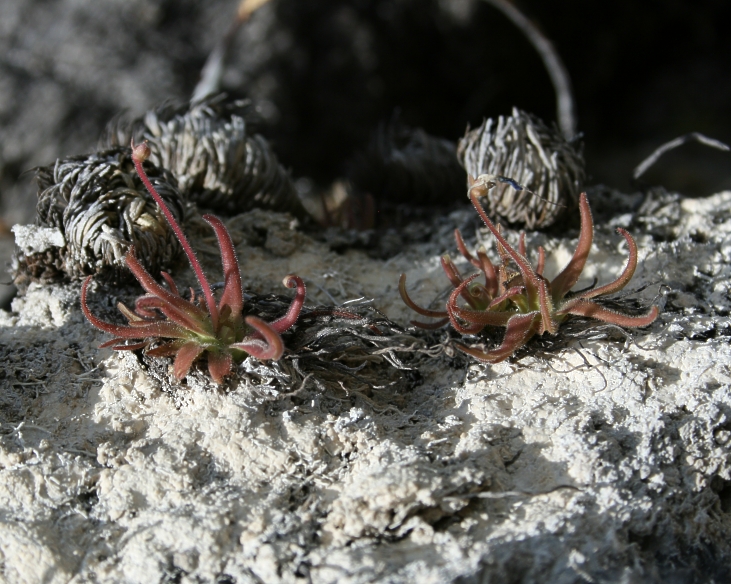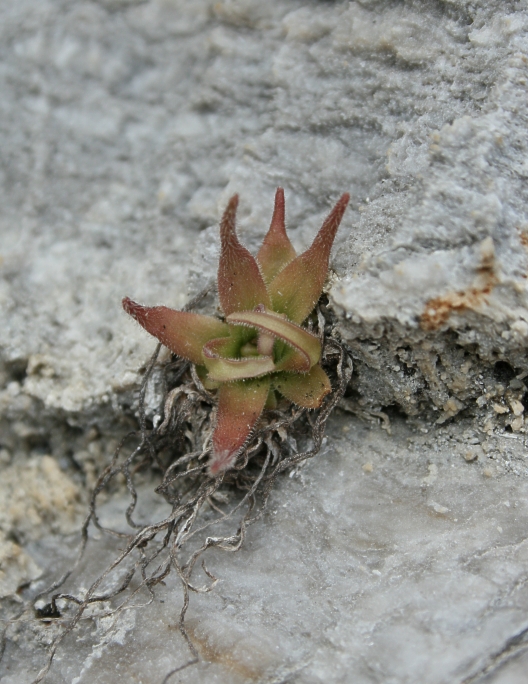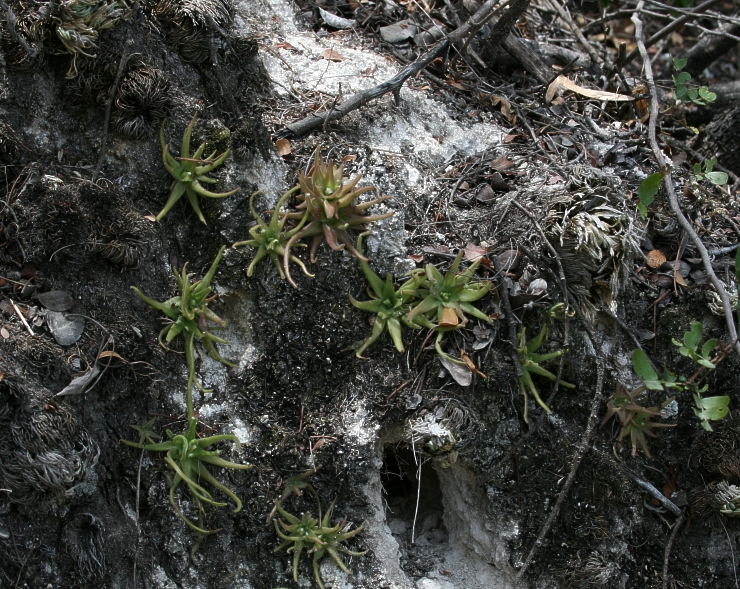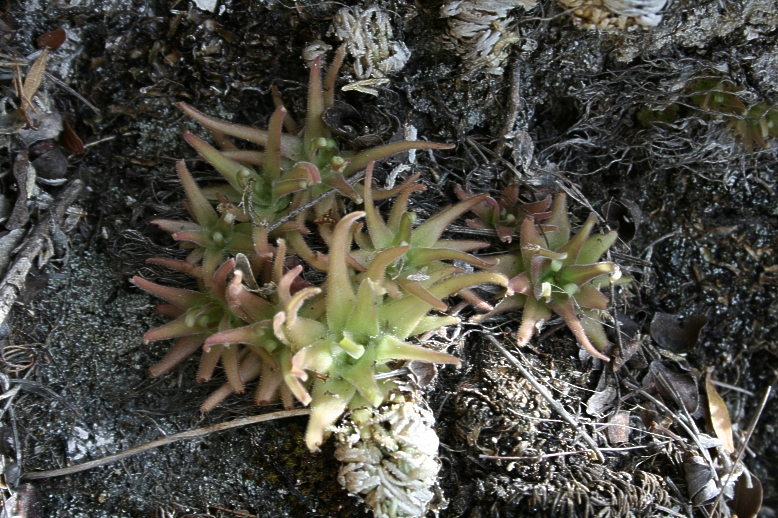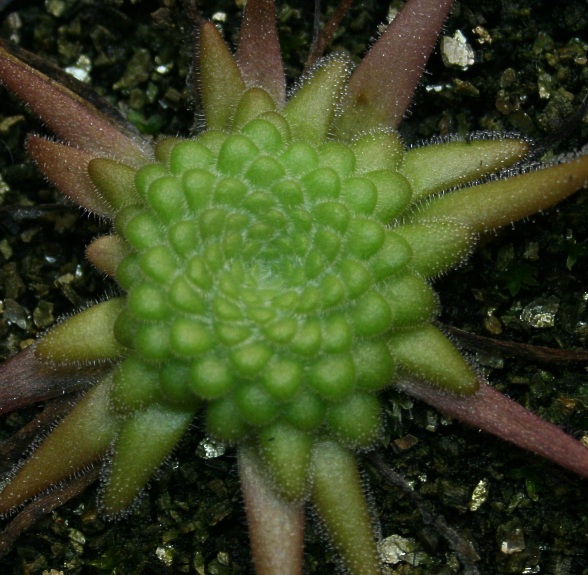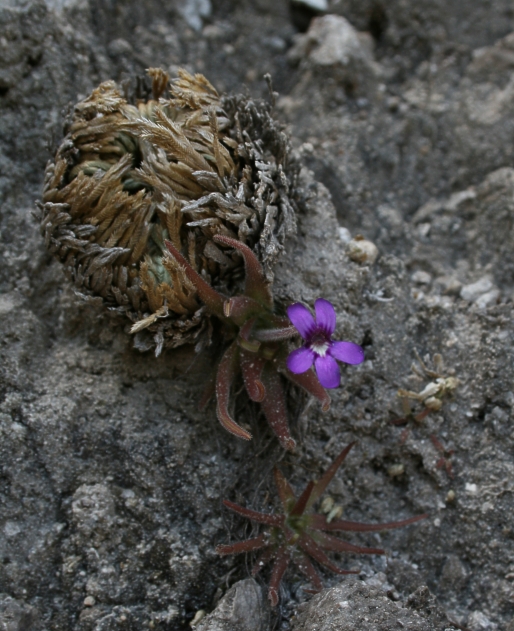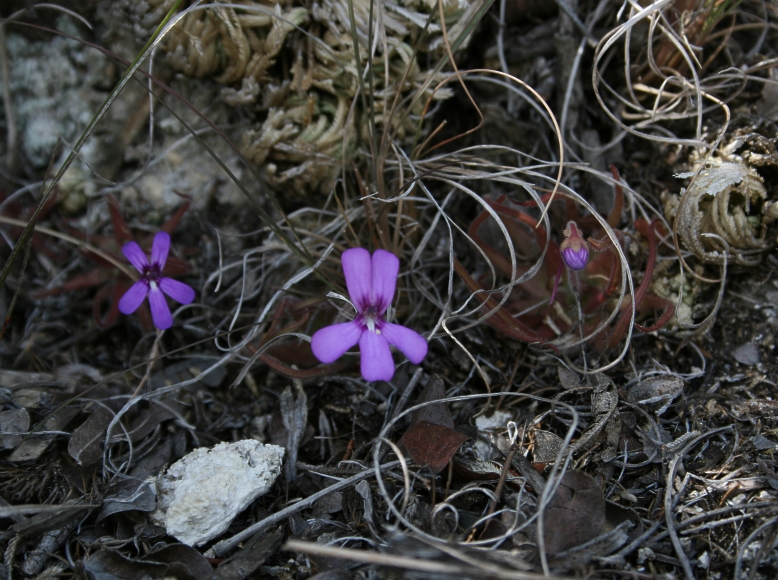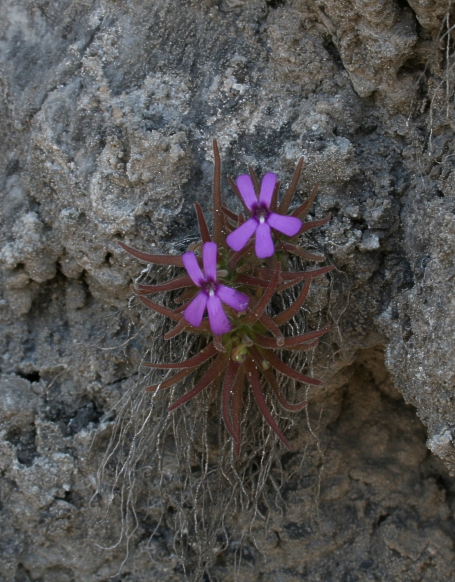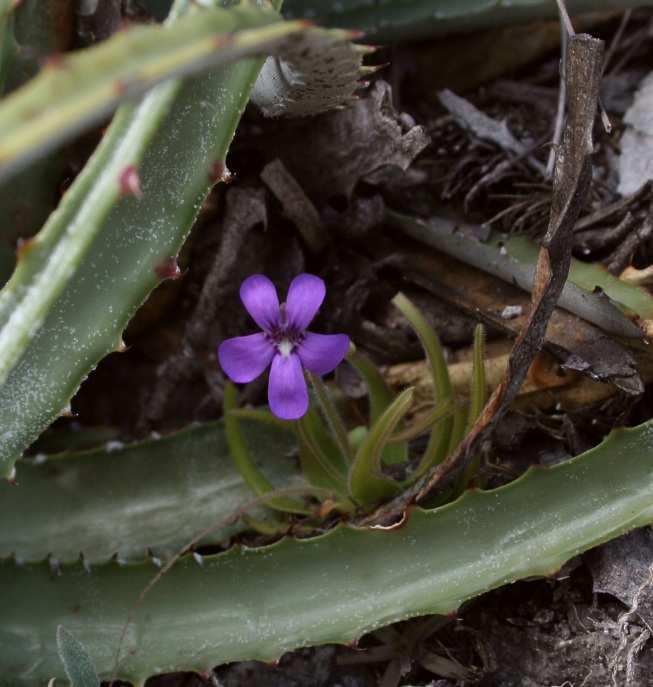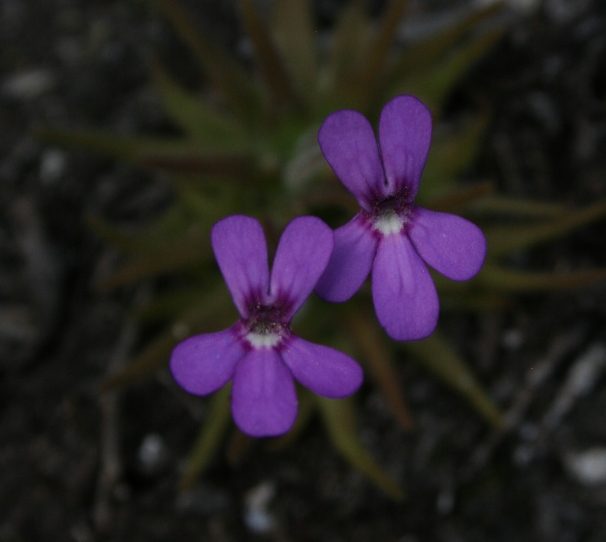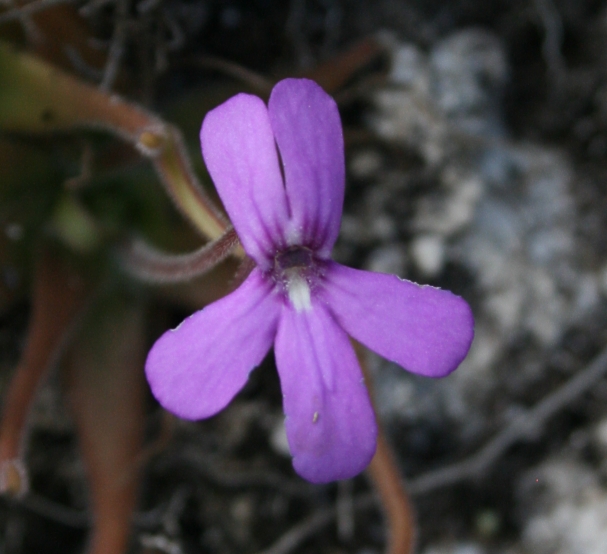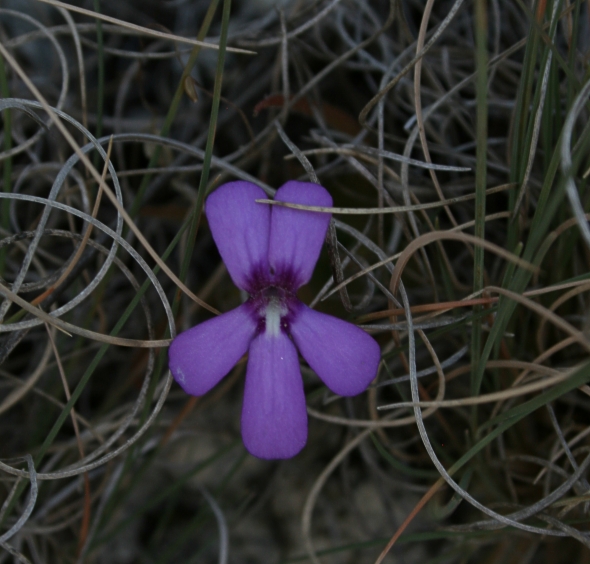
Oliver Gluch's World of Carnivorous Plants or: "What you always wanted to know about butterworts" |
| Impressum |

| Home | Origin | Prey | Species | Plant Purchase | Other Carnivorous Plants | Info about Carnivorous Plants | About me |
Pinguicula gypsicola Brandegee (1911)The
botanist
C. A. Purpus found in 1910 close to a gypsum quarry
named "Minas de San Rafael", located in the Mexican
State of San Luis Potosí (east of the town of San Luis
Potosí), some butterwort specimen, that he shipped to
Europe. In 1911 T. S. Brandegee then described the
plants as a new species under the name P. gypsicola.
At that time this was the only known butterwort species
that was occuring on gypsum. For a long period all
plants grown in Europe (including the plants at Kew
Botanical Garden) originated from this collection. Only
at the end of the 1980s new clones of P. gypsicola
were collected at different locations, so genetic
diversity could be increased in cultivation.
The
typical
habitat of P. gypsicola are gypsum hills. The
plants grow either in crevices of crystalline gypsum or
in thin layers of eroded gypsum soil. The plants prefer
to grow on the more shaded hill sides facing north or
north-west, as there the water evaporation of the soil
is less and the temperatures are lower. Sometines plants
can also be found in shady places in small canyons
formed in the gypsum hills. During the dry season from
December until June the habitat is almost completely
dried out and plants get humidity only from morning
fogs. During the period from August to November, there
is more regular rainfall. It seems that the gypsum
itself also stores the humidity from the air, that the
plants can also profit from.
The accompanying vegetation at the habitat are xerophytic shrubs, diverse Hechtia species, Agave stricta, different cacti as well as Selaginella cuspidata. At some locations also the annual butterwort P. takakii does occur. P.
gypsicola does form a winter rosette during the
dry season. Thze compact rosette consist of 60 to 80
spatulate, obtuse non-carnivorous winter leaves, that
reach a length of 1,5 cm lang and are at the widest
point up to 4 mm. The base of the winter leaves are
covered with white, laterally protruding hair.
With increasing humidity, from begin of July on, the plants start to form summer leaves. The summer rosette consists of up to 30 leaves. The first summer leaves are only some centimeter long and broad at the base, then the leaves can reach a length of 8 cm, while at the leaf base they are only 8 mm wide. The shape of the summer leaves is elongated-lanceolate. The upper side of the leaf is densely covered with gland bearing hair. The leaf colour can vary between green and reddish. The
flowering
period of P. gypsicola occurs between June and
November (depending on the soil humidity, flowering can
begin also later). Flowers do appear with the formation
of the first summer leaves. It is not a rare case that
the number of flower scape per plant can reach 10 per
season. The flower scape is densely covered with gland
bearing hair and can reach a length of 17 cm, but most
of the flower scapes are more between 8 and 12 cm long.
The
corolla
is divided in an upper and a lower lip. The petals do
have a violet to purple colour. The petals are
lanceolate and the tip of the petal is mostly
rounded. Around the entrance of the corolla tube the
upper side of the petals show a dark violet spot or dark
violet veins. The middle lobe of the lower lip shows a
white spot variable in size and form. The diameter of
the corolla is between 2 and 2,5 cm. The spur is with up
to 2,5 cm quite long and pointed at the end.
For the cultivation of P. gypsicola it is
recommended to keep the substrate not to wet, even in
summer, to avoid rotting of the roots, that can
continue with also the leaves and then the plants will
die. As soon as the first winter leaves are formed,
watering of the plants should be stopped and the
substrate should be kept dry over winter. P.
gypsicola does not need necessarily gypsum a
substrate for cultiuvation. This species seems to
adapt well to quite a range of different substrates
and pH does not seem to be important, but a good
aeration of the roots seems to be important ofr a long
term success in cultivation. |
